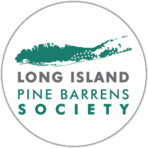We’re a bit over halfway through 2025, and that means we’ve completed half a year’s worth of 12 for 12 posts. If you’ve not been keeping up with our series of monthly hike reviews, you can find them all here. This year, we’ve covered the Ridge Conservation Area, Mashomack Preserve, the Suffolk County Environmental Center, EPCAL, Hubbard County Park, and the Shorefront Park in Patchogue. Not one of these preserves is anything like the others. Some are huge and take hours to traverse in their entirety, while others can be lapped in just a few minutes. The habitats range from coastline, to marshland, to grassland, to thick forests, or some mixture of all of those. If there’s one thing we’ve learned from 12 for 12, it’s that it’s difficult to define a park. So, that leaves just one question: what makes for a good park?
The first thing that comes to mind is also the simplest: aesthetics. A good park looks good! But what looks good to one person is not necessarily the same as what looks good to another. One person might be enamored by the sweeping field at Mashomack, while another might be awed by the vast bay as seen from Heckscher State Park, while yet another might find joy in the transition from one habitat to another, as can be seen in Hubbard County Park.Beauty is in the eyes of the beholder, as they say, and what appeals to one’s eye on any given day can change for no reason at all.
The next thing that comes to mind is the flora and fauna found at a given park. Different parks can have wildly different selections of plant and animal life depending on their location (are they closer to the coast, or further inland?), their primary habitat (forest, grassland, marshland?), and more. The wildlife you can find at EPCAL is vastly different from that which is found at Connetquot State Park, which is different from the wildlife found at Shorefront Park. There may be some overlap, but the dynamics of the ecosystem can change dramatically. Depending on the time of year, the same park might host a wildly different selection of critters, as migration season ebbs and flows. But, once again, we walk into the realm of subjectivity, as what wildlife a person is interested in can vary greatly.
Next, I want to talk about is level of activity. It’s something we focus on a lot in 12 for 12 because we at the LIPBS believe it’s important for everyone to be able to enjoy Long Island’s ecology. Parks with paved paths, ample parking, and low elevation are essential for people who aren’t up for a lengthy hike through tricky terrain. Fortunately, there are plenty of accessible parks on Long Island which feature a diverse array of habitats. Blue Point Nature Preserve features pleasant grassland while Patriots Preserve has extensive forest, grassland, and a pond, and Shorefront Park is right on Patchogue Bay. There’s a wide selection of habitats one can explore regardless of their physical ability or interest level. However, while it is absolutely essential that there are plenty of these sorts of parks, that doesn’t necessarily mean that every park or preserve must be equally accessible in order to provide a quality experience. Some people desire a challenge – they want to conquer winding trails, hills, dense marsh, and more. Just as accessible options are essential, challenging alternatives should exist for those who want them. And that brings me to the conclusion of this blog.
There is no one metric by which one can judge the quality of a park. Aesthetics are entirely subjective, as is the interest a person might have in a given habitat, species, or activity. It is essential that there are accessible options so that everyone on Long Island can partake in its natural beauty, but parks that provide a challenge for those who seek it are essential, too. No one trait makes a park great, nor is there one park that can be held up as the best because every park has something to offer. What makes Long Island’s system of parks great is its variety. There is a place to serve every want and need a person has – whether they’re looking for a brief walk, are an experienced naturalist, or are somewhere in between. And the more we continue to preserve land (such as the parcels we’ve identified in our “The Best of the Rest” initiative), the truer that will become. Every park, preserve, and wildlife refuge has something unique to offer, and whether you’re able to visit them all, or prioritize just a handful of favorites, the most important thing is that you get outside and enjoy Long Island in its natural state.
By Travis Cutter, Long Island Pine Barrens Society


